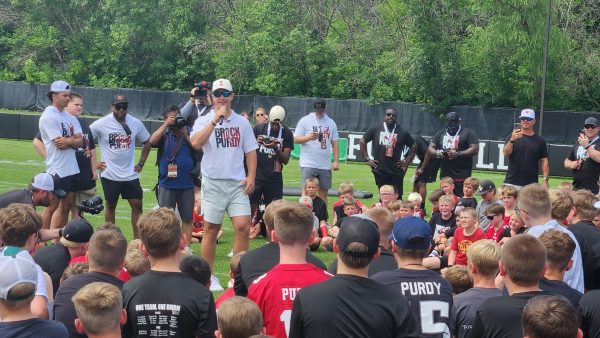Redshirting presents student-athletes with unique opportutnity
February 6, 2012
All student-athletes have five years to complete four year’s worth of college athletic eligibilty. For some, they use all their eligibility along with their regular course of college, playing on the court from their freshman to senior year.
Others use a redshirt — which is when a student-athlete sits out a year of competition in order to build up skills for their sport — which, in effect, makes those student-athletes have to stay in school for another year.
“In Division I, [a student-athlete’s] clock starts as soon as [they] enroll full-time in college,” said ISU Assistant Athletics Director of Compliance Dustin Gray. “The rule is a student-athlete has four years to compete in a five-year window.”
Even though the athletes have potentially five years to compete in college athletics, if a student-athlete chooses to redshirt a year in athletic competition, they still have to stay in school and make progress toward their degree.
Redshirting and education
Since a student-athlete who is redshirting has an extra year to compete and they have to be enrolled full-time in college to do so, according to NCAA rules, he or she has to make plans to stay in school until their athletic eligibility clock runs out.
“Once [a student-athlete] enrolls, they have to follow the same rules that the NCAA prescribes as far as progress toward degree, all the same rules apply to them,” said ISU Associate Athletics Director of Academic Services Tommy Powell. “So as we are working with them, it’s such a huge benefit for academics of the student-athlete because they are making the same progress, but they also get an extra year to be able to compete.”
For some, the extra year student-athletes spend in school is used to work on a second bachelor’s degree, but others move from undergraduate to graduate school work.
One of the students who moved on from undergraduate school to graduate studies is redshirt senior wrestler Andrew Sorenson.
“I never really planned to go to grad school, it just happened out that way,” Sorenson said. “The fifth year is great because you don’t have to take as many credits as a normal student would.”
With two more years left in his eligibility, redshirt sophomore football player Jeff Woody is weighing his options on what to do after he finishes his degree.
“We have to meet certain academic standards as student-athletes. Just because we are sitting out a year of competition doesn’t mean we get to sit out a year of school,” Woody said. “You have to look at your life goals and decide what you want to study in that fifth year.”
Woody is considered a senior academically at Iowa State.
To help athletes decide on what they might want to study in the future, the top floor of the Hixson-Lied Student Success Center is full of staff that help student-athletes progress in school while playing collegiate athletics.
Since it can take a while for the academic services to learn that a student-athlete is redshirting, Powell said every student-athlete is put on the same four-year plan that non-student-athletes are put on in terms of the classes they take for their degree.
“The redshirt year is a huge advantage for a student-athlete because they are not subject to the traveling in the first year, so they can focus on their academics a lot more,” Powell said. “That allows them to have that extra year, which they can use to finish up their degree or work on a second bachelor’s degree or work on graduate school if that’s what they choose.”
Even though it wasn’t the student-athlete’s choice to redshirt in the first place — it is usually a decision coaches make — it is the student-athletes’ job to figure out what to do after their initial bachelor’s degree has been awarded.
“I took all the classes that I needed to and I had a year left. So I was like, ‘What am I supposed to do?’ Either I could take a full year of classes that I wouldn’t complete the degree in or move on to grad school,” Sorenson said. “I just thought it was a smart choice to move on to grad school.”
Being in graduate school has set more refined career goals for Sorenson, and he said he’ll stay in school because that is what is important for his future after his collegiate athletic career is over.
“Someday I want to be a head strength coach and to do that I have to have a master’s degree,” Sorenson said. “If there wasn’t redshirting, I would have lost a year of eligibility. I think it just gives kids a year to grow and figure out what they want to do and start taking advantage of their life.”
Getting student-athletes to start to think about their life outside of athletics is a goal of Powell and his staff.
“Freshmen coming in with the more high-profile sports are always thinking professional, and that’s what we want them to aspire to, but over the course of time it’s me and my staff’s job to help them see life beyond athletics,” Powell said. “I think we really do a really good job in here with a lot of, just reality, there is only a certain percentage of Division I football players that go on to be professional players and the same thing with basketball and the other sports.”
















